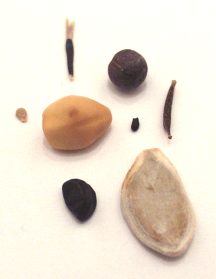Flowers in Greek Mythology
 Look closely and you’ll find Greek among your favorites plants, especially flowers. It’s true that we recognize ancient Greeks more for their contributions to language, architecture, art, and government than gardening. However with such a lovely Mediterranean climate, floral life naturally abounds in Greece, making their contribution through mythology and names natural. Amaryllis The Amaryllis is a stunning flower, grown from a bulb, that is native to Chile and Peru. It was named “Amaryllis”, meaning sparkling, derived from Greek, by a physician from Leipzig who was on a plant expedition. While we associate Amaryllis with the flower, in ancient Greece it was a popular woman’s name. Anemone Iris Narcissus The Greek myth about Narcissus is a classic “origins myth” – a story to explain why and how something in nature has come to be. Narcissus was a handsome youth who fell in love with his own image. He died by drowning as he tried to reach out to his own image in a pool of water. The flower grew in that place to  commemorate commemoratehis death. Another Greek myth tells of Persephone, Demeter’s (goddess of agriculture) daughter, who was picking daffodils (or Narcissi). As she wandered away from her companions, Hades (god of the Underworld) snatched her and took her to be his bride. Thus Greeks and Romans associated daffodils with death, the afterlife, and rebirth. Laurel Tree In Greek mythology, Daphne was a beautiful young nymph. She was dedicated to Artemis, goddess of the hunt, and had no interest in the many suitors who wanted to marry her. She even refused the advances of Apollo, son of Zeus. Apollo was very much in love with Daphne and couldn’t accept that she wouldn’t marry him. As Apollo chased her through the woods, Daphne prayed to her father Peneus, a river god, to help her. Peneus transformed her into a laurel tree. Thus the laurel tree (called daphe in Greek) became sacred to Apollo. The laurel wreath symbolized excellence to the ancient Greeks and was used as a crown of victory for Olympic champions. Read more in the book “The Language of Flowers: Symbols and Myths” by Marina Heilmeyer. |

 they
they




